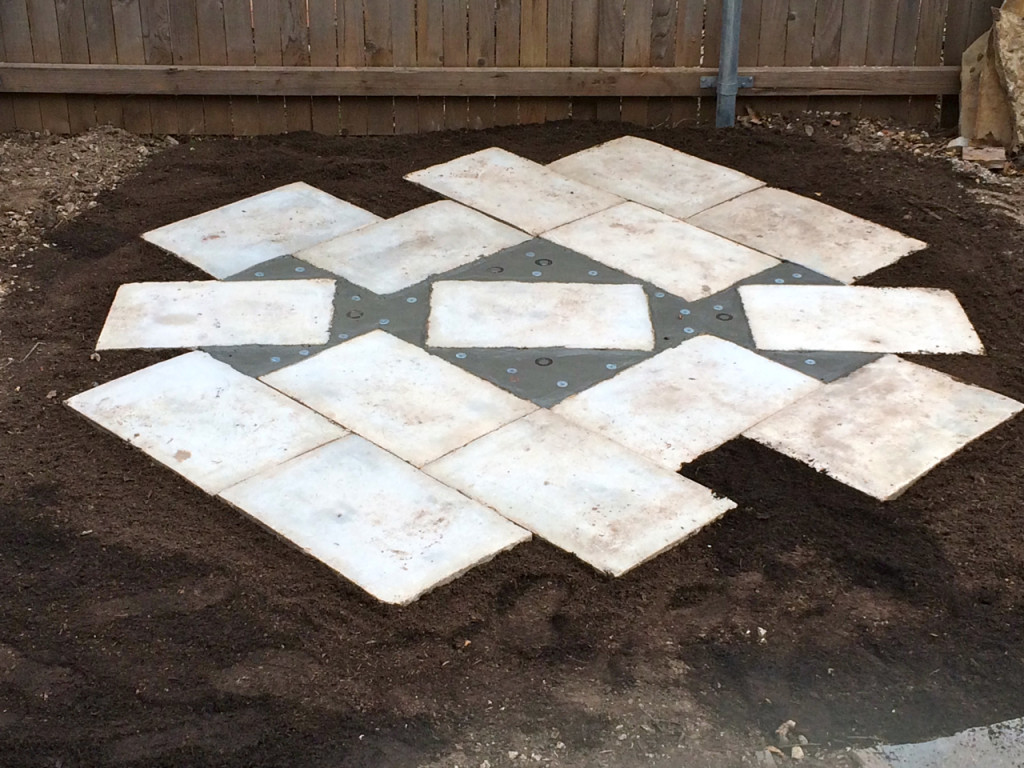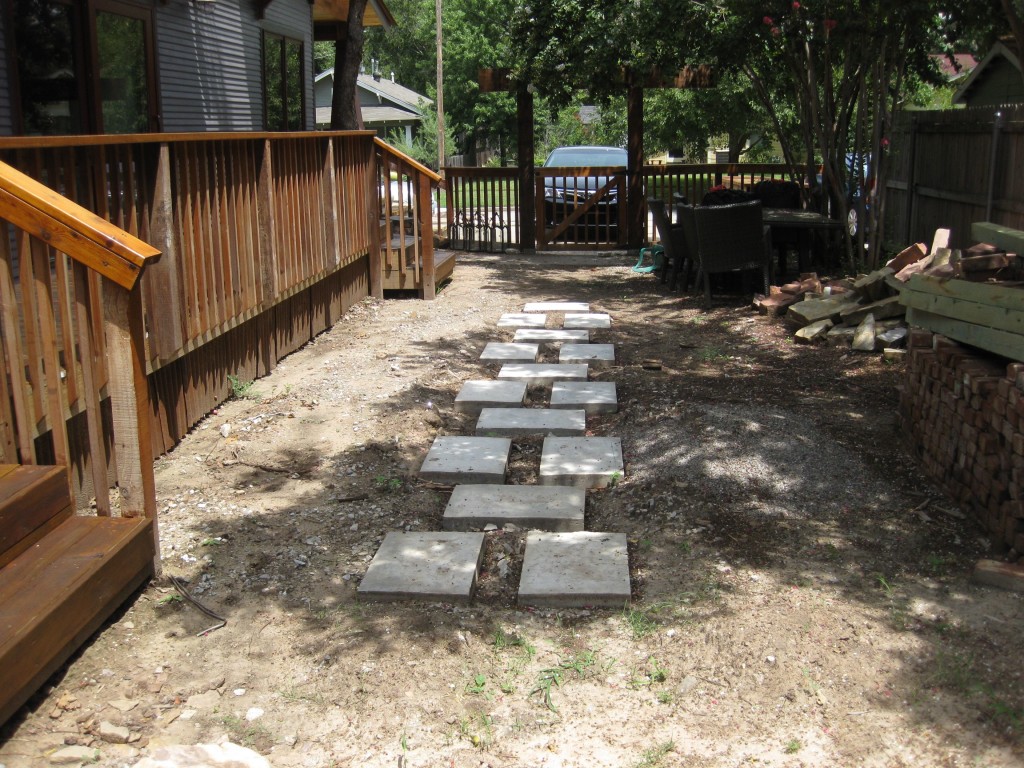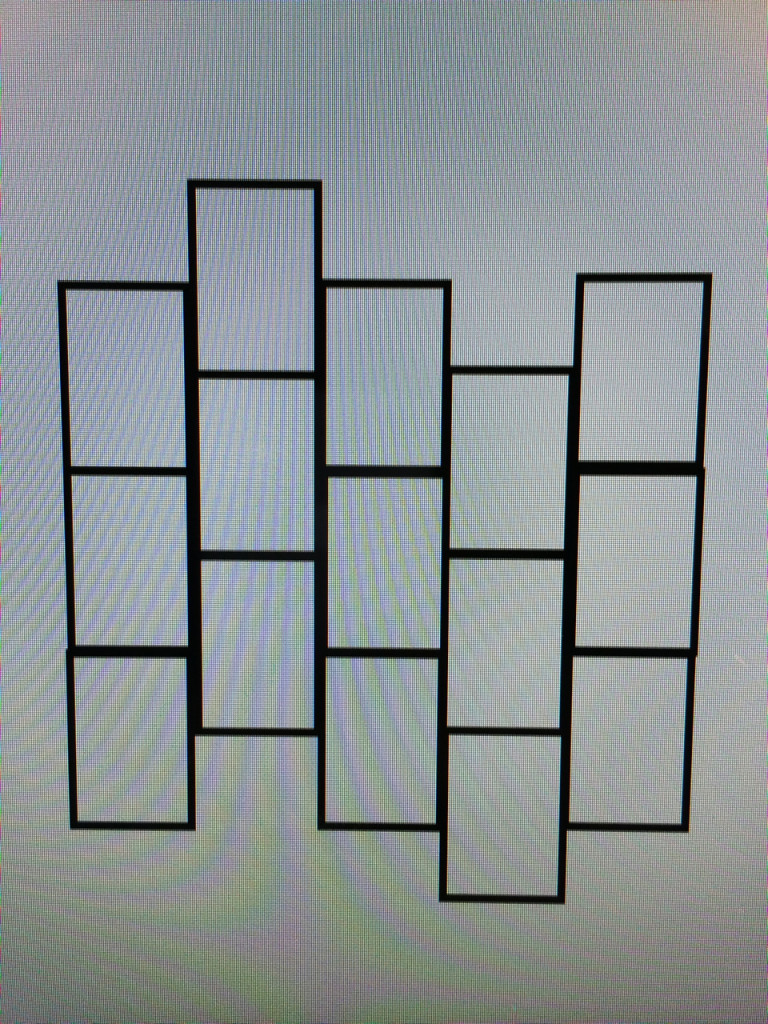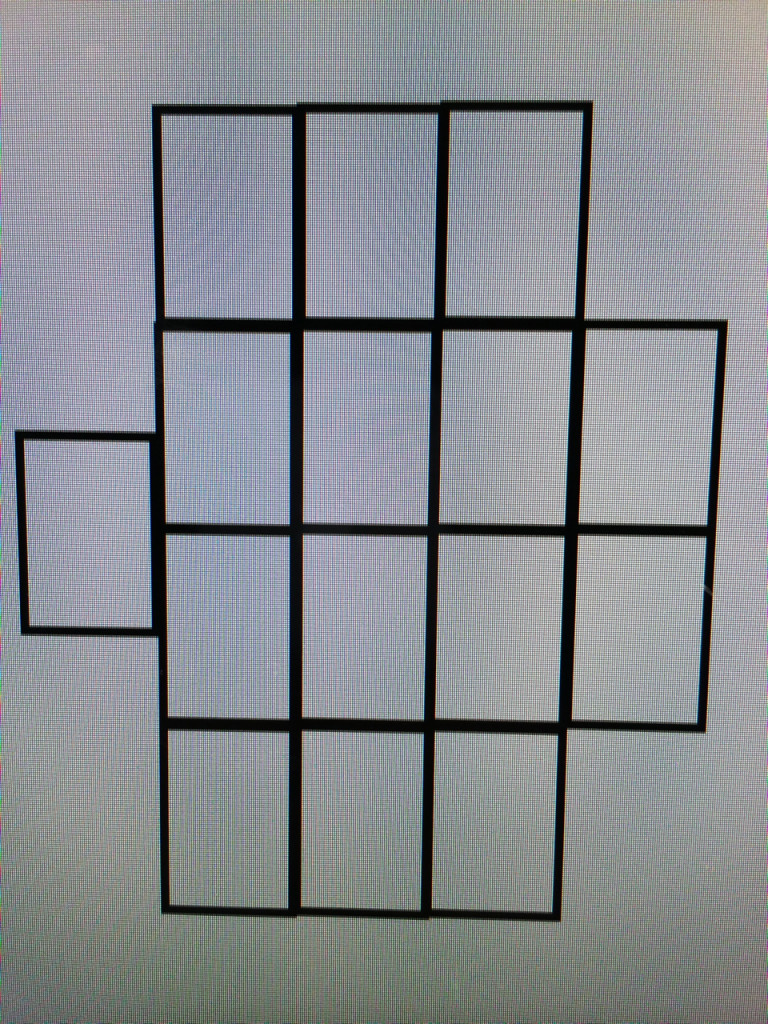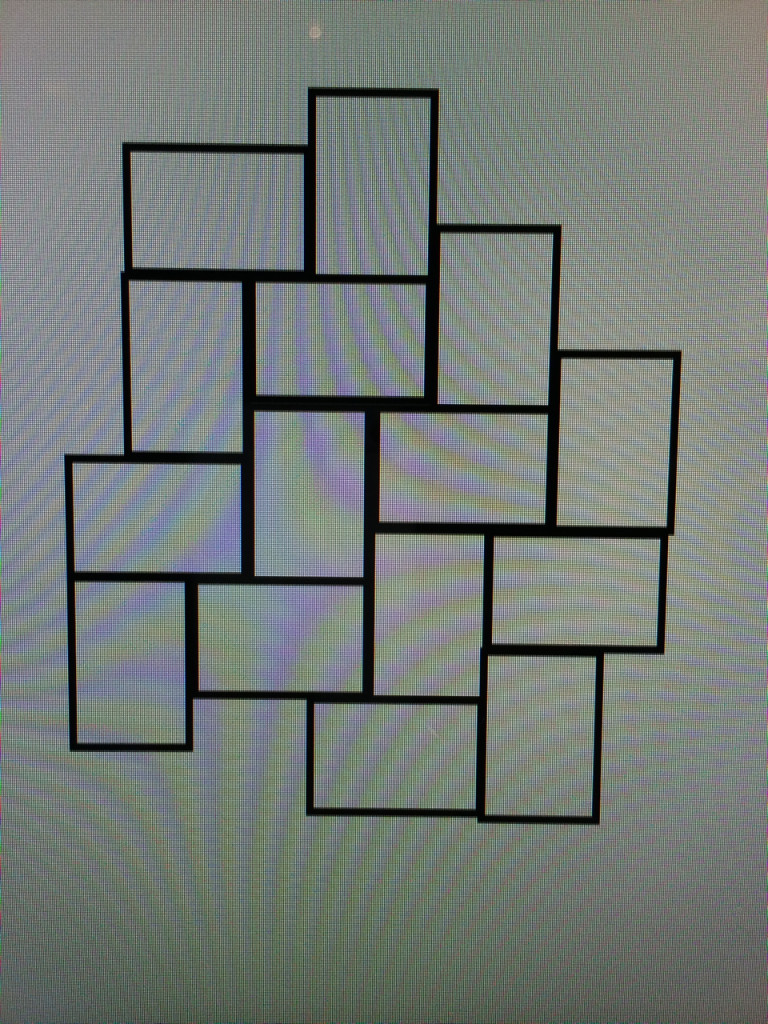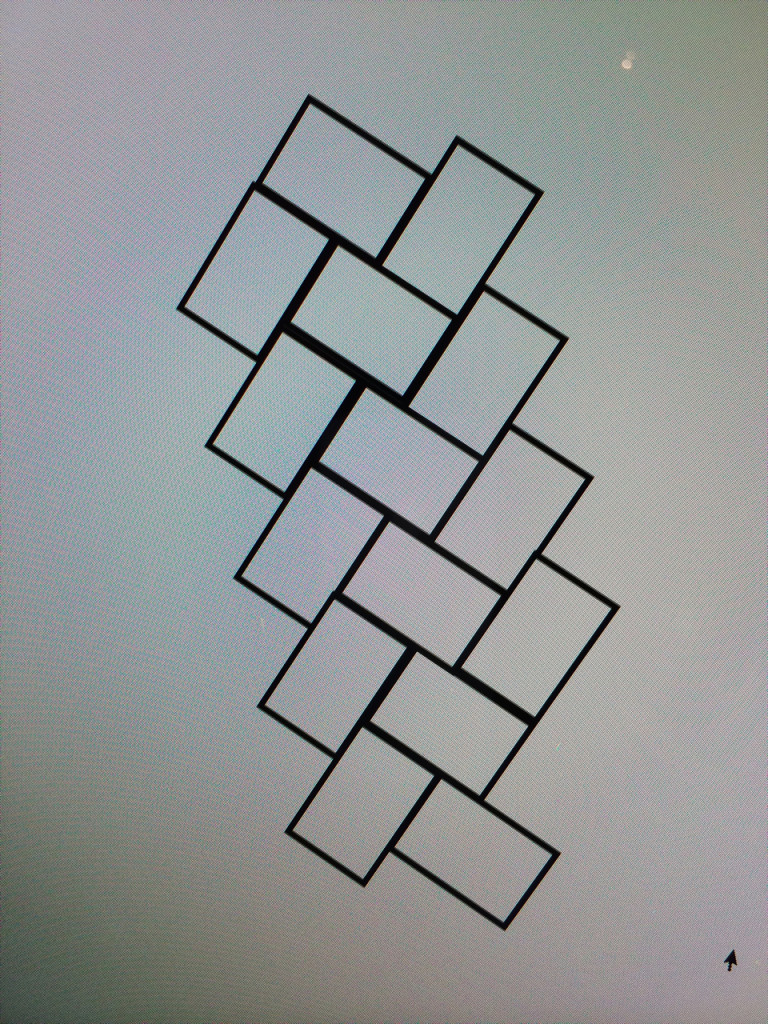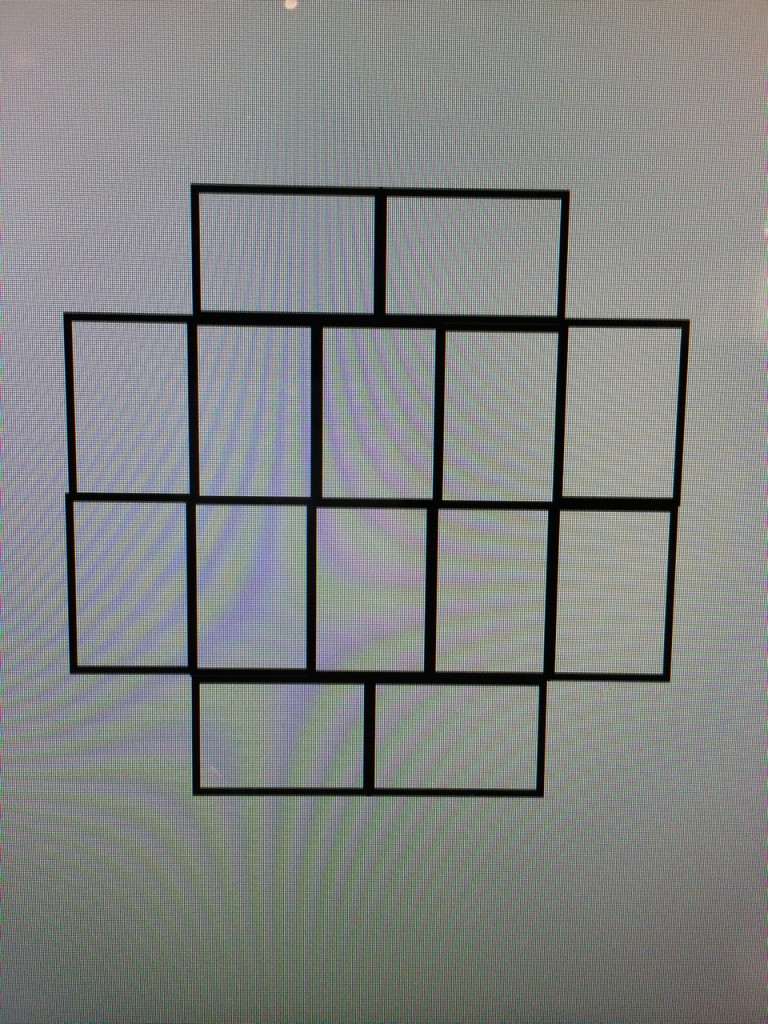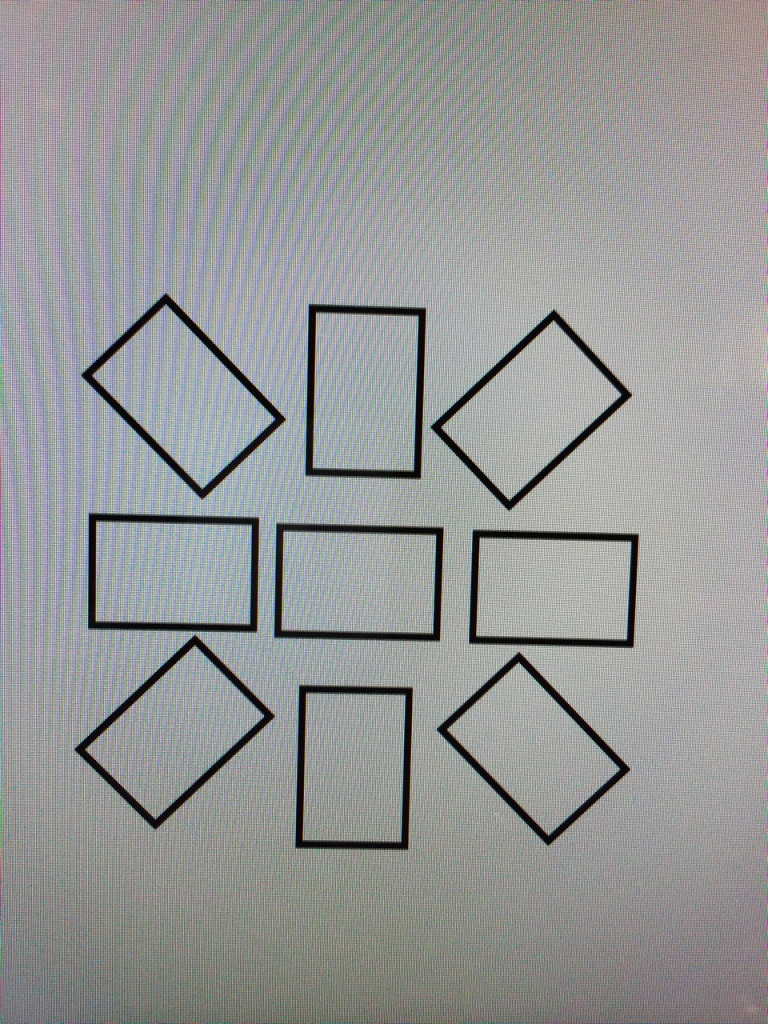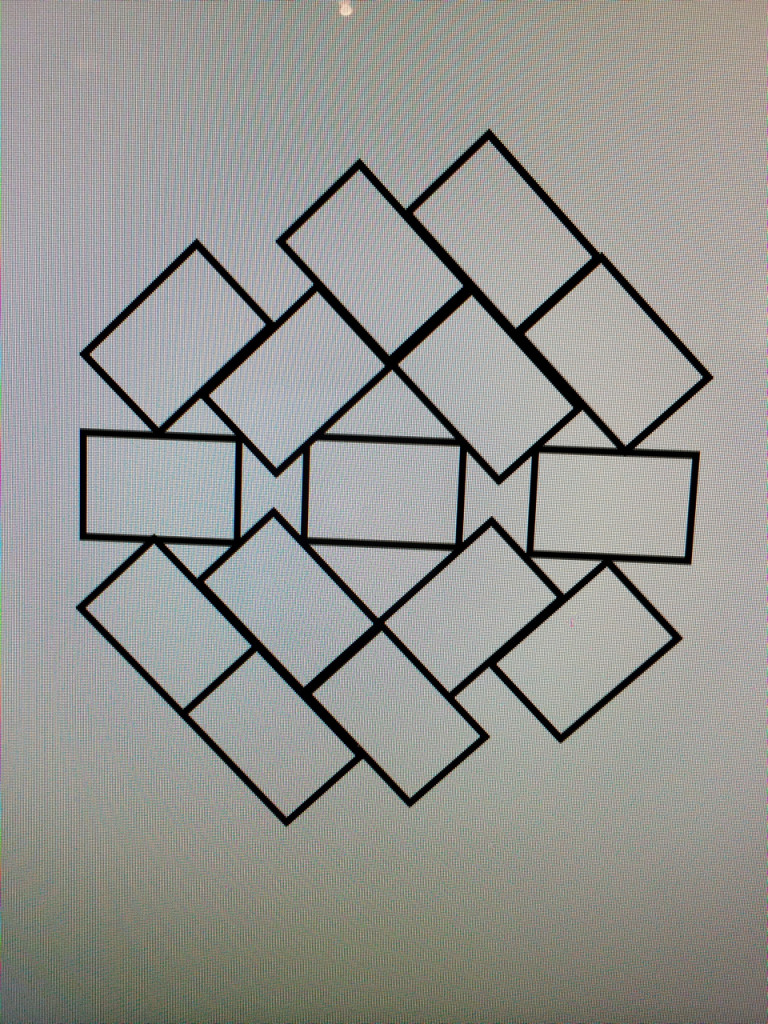All of the rain has been kind to our Pi house project (except for the leaf rust on the Wheat). Here’s some recent photos showing how things are progressing. I’m glad to see many pollinators and abundant wild life enjoying the biodiversity.
Tag: pi house
Sweet Potatoes Not Lawns
This year we were excited to try out a two crop rotation in our “Ag lawn” area at the Pi House. When we took over the project the area had been an artificial turf lawn and before that it had been a standard non irrigated “lawn” of mainly Bermuda grass and the typical weeds found in poorly maintained lawns. Our idea was to push the idea of “food not lawns” further than the standard veggies etc. into the production of real calorie producing food crops that could also provide some ornamental value. We wanted to try something bold that could challenge notions about the real potential of turning a lawn, which is an essentially useless space, into a productive mini farm space that can actually provide some of level of self sufficiency for residents. We also wanted to bring elements of Oklahoma’s agrarian landscape and past into the urban setting. In a modern take on a share cropping system, the Eco crew and myself invested some of our labor time into the crop and in return we split up the harvest.
Starting late last Fall after our initial landscape installation we were able to squeeze a sowing of winter wheat in and despite the late planting we had a really healthy crop. Back in June we harvested the wheat crop and we were pleased with our result of 40 lbs from our fairly small ~700 sq. foot area. This should be enough wheat to make at least one loaf of bread per week for a year! I’ll be posting more about the wheat harvest and processing in the near future. Directly after our wheat harvest we planted 500 sweet potato slips of 8 different varieties which took a couple of hours. The little bit of wheat straw left on the area was a great mulch and it by mid July there was an attractive looking sea of sweet potatoes. As the summer progressed the plants got huge and created a thick mass of colorful vines that threatened to engulf sidewalks, beds and the home but with a little gentle training stayed relatively in their area. In Oklahoma we are blessed with a long warm growing season so we were able to wait until early November to harvest. Harvesting sweet potatoes is equal parts digging for buried treasure and working on a chain gang but it only took 3 of us roughly 4 hours to harvest our crop. Our efforts were well rewarded with a 240 lb harvest! All in all it was a productive first season for the “ag lawn”. We have now planted the winter wheat and we’re planning a similar rotation for this year although we may incorporate some dry beans. The possibilities are really endless as we could go with a summer grain ie amaranth, maize, millet or other summer crops like sunflowers, peanuts, lentils etc. What kind of mini farm would you like to replace your energy intensive non productive lawn with?
- Planting slips mid June
- Looking over the work
- 500 slips planted in a few hours
- 1 month later in July
- 2 months later in August
- 3 months later in September
- Cutting Back tops with Scythe. November
- Harvesting with broadfork
- Harvesting sweet potatoes makes you happy
- A rare smile
- Buried treasure
- Harvest weigh in: 240lbs!
- Visions of sweet potato paradise
City of Norman Landscape Award for Pi House
One of our flagship projects ,the Pi House, has received City of Norman Water’s Worth It™ Landscape Award. The city presents the award every month “to a resident of Norman for creative and attractive landscape maintenance and appearance, while demonstrating wise water use. Conservation techniques and native or drought tolerant vegetation are greatly encouraged”. We have made every effort to make this site as drought tolerant and eco friendly as possible. We designed and installed the irrigation system which is mostly drip based and uses a rain/freeze sensor and we have also selected plantings that need very little of the irrigation water. Our main design mandate with this project was that all plantings should be either native, water-wise or edible. It’s nice to be recognized by the City for this project and the award itself is a really cool idea. I hope it will encourage more people to consider alternatives to the landscape status quo and to conserve our precious water resources. I’m also hoping that the city won’t be able to complain about our Wheat/Sweet Potato rotation Ag lawn since they’re giving us an award! I’ll be posting more about this project as time permits (thus far I’ve only covered the interesting little patio design.)


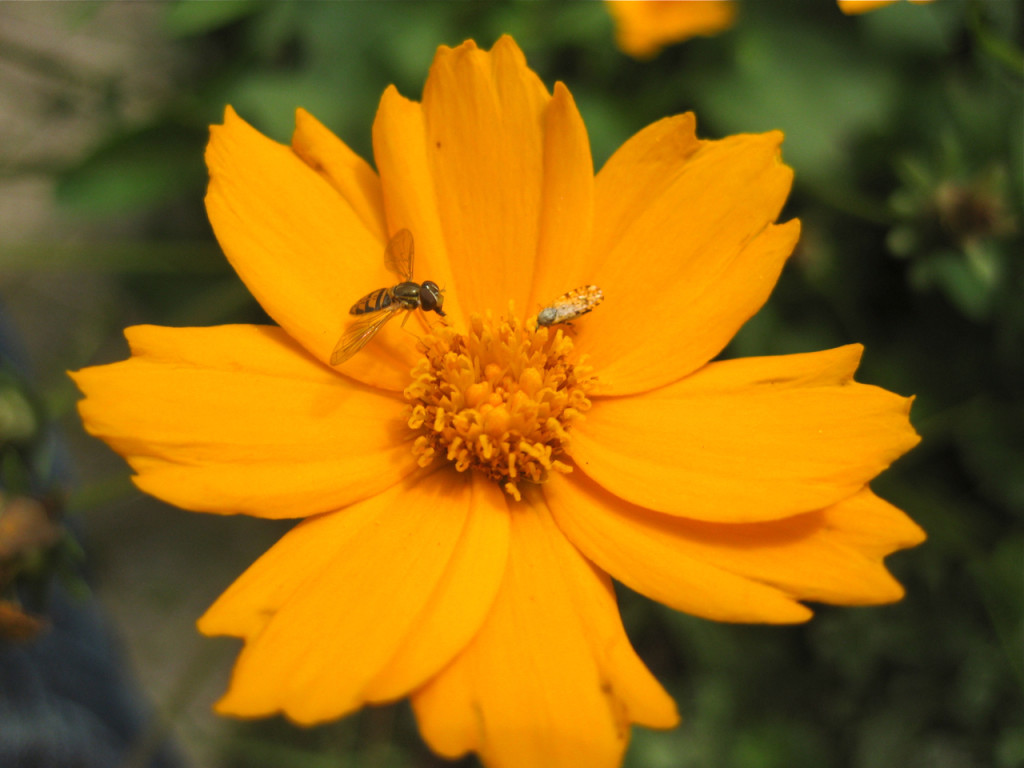
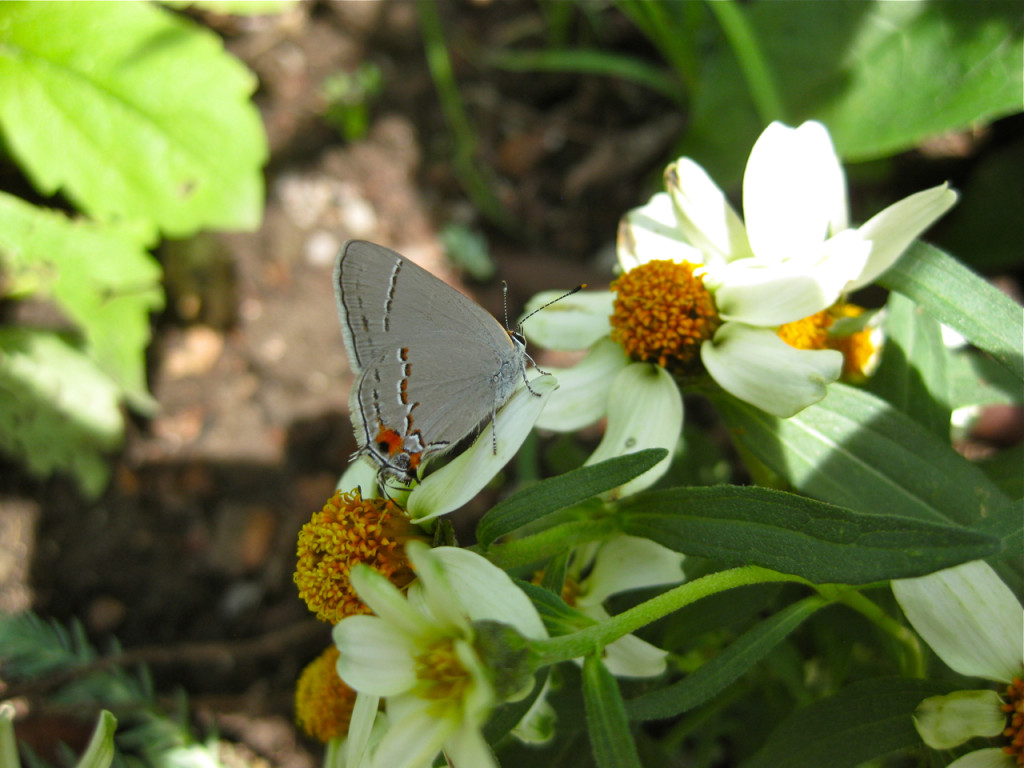
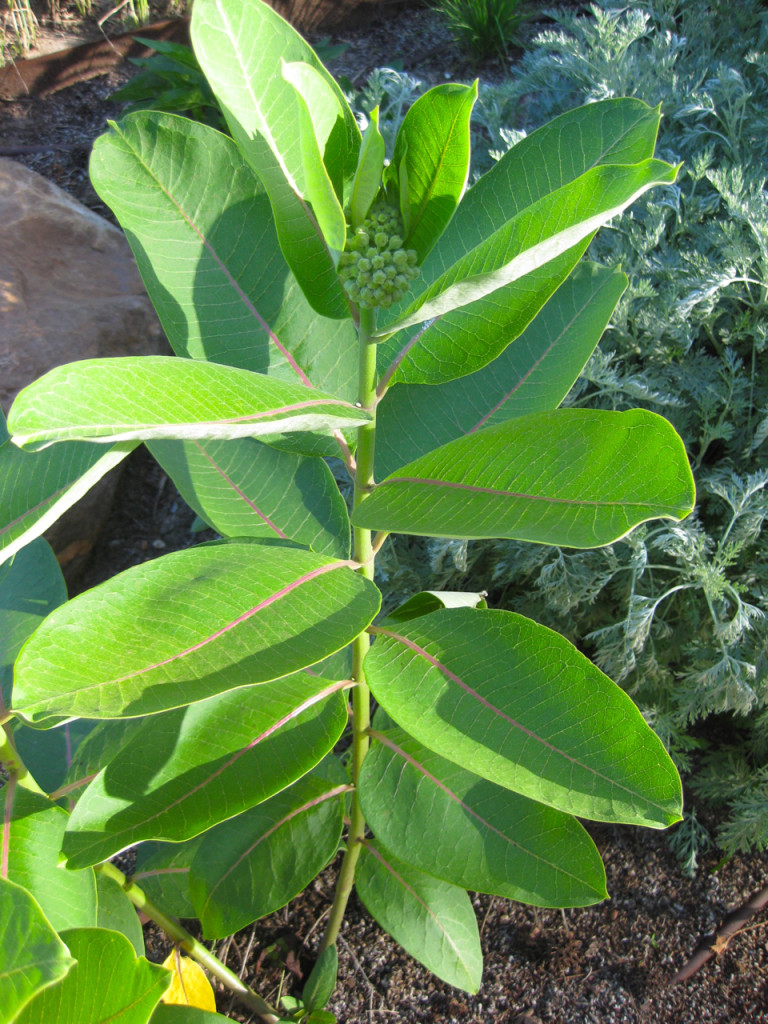
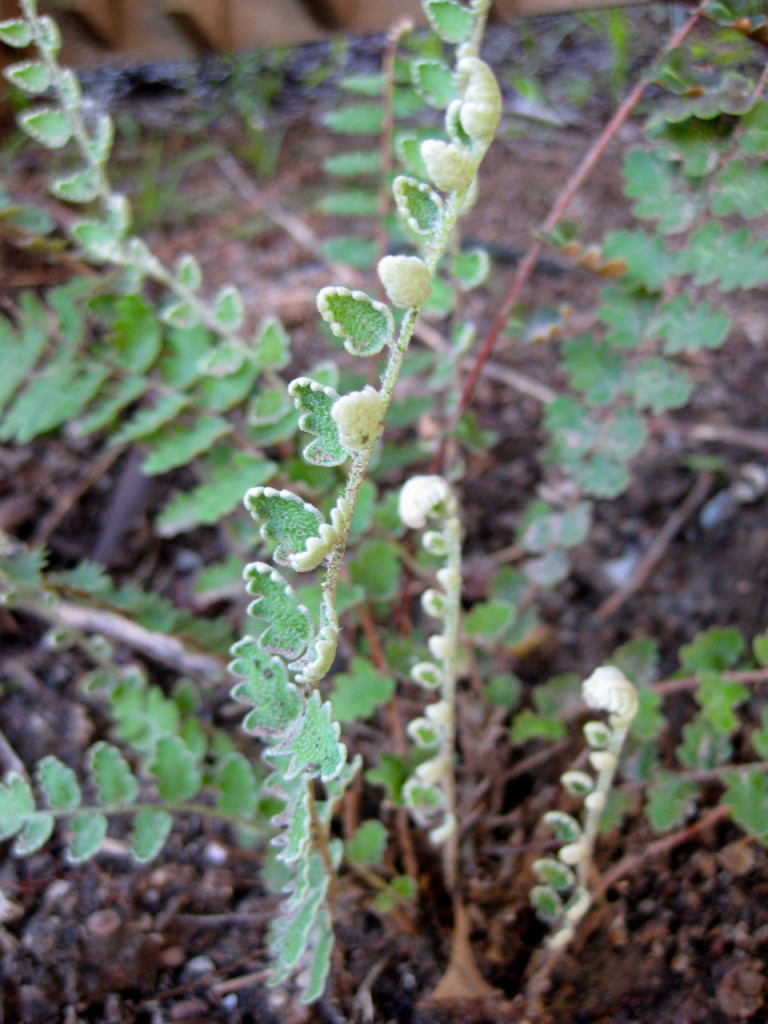
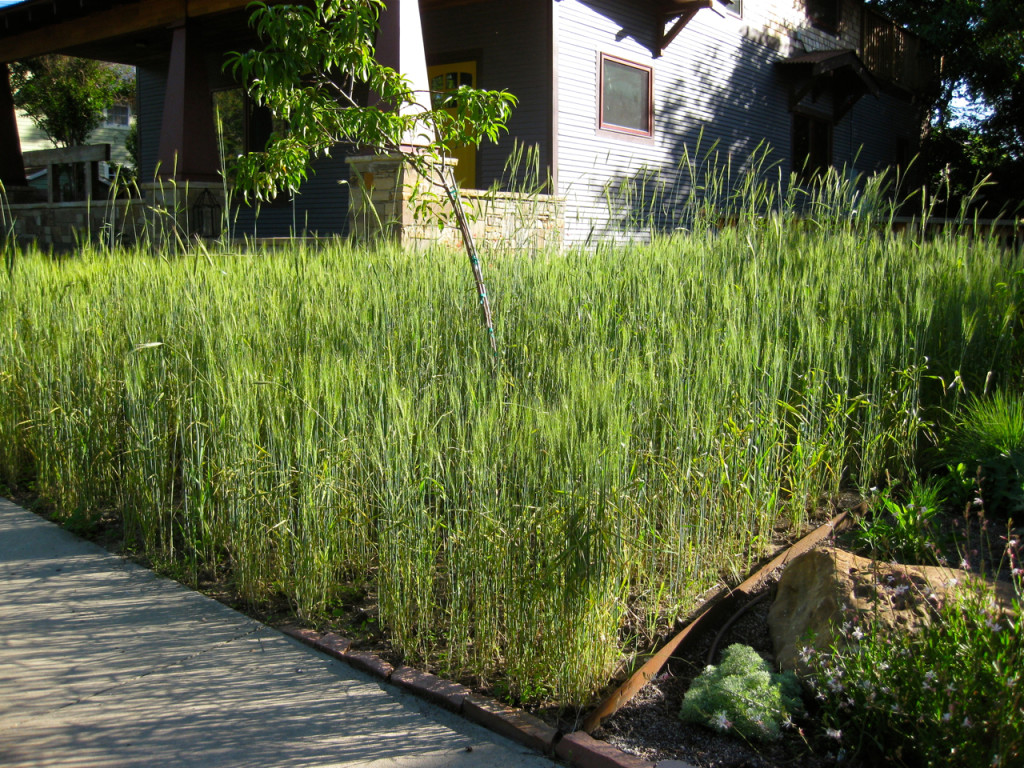
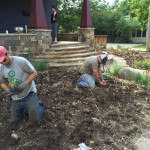
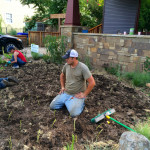
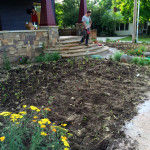
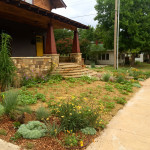

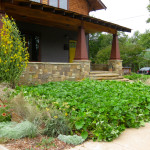
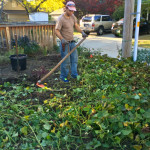
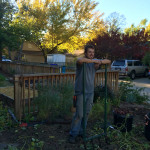
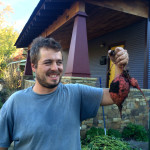

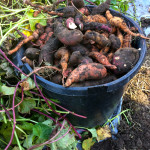

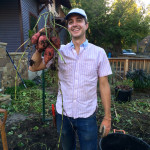
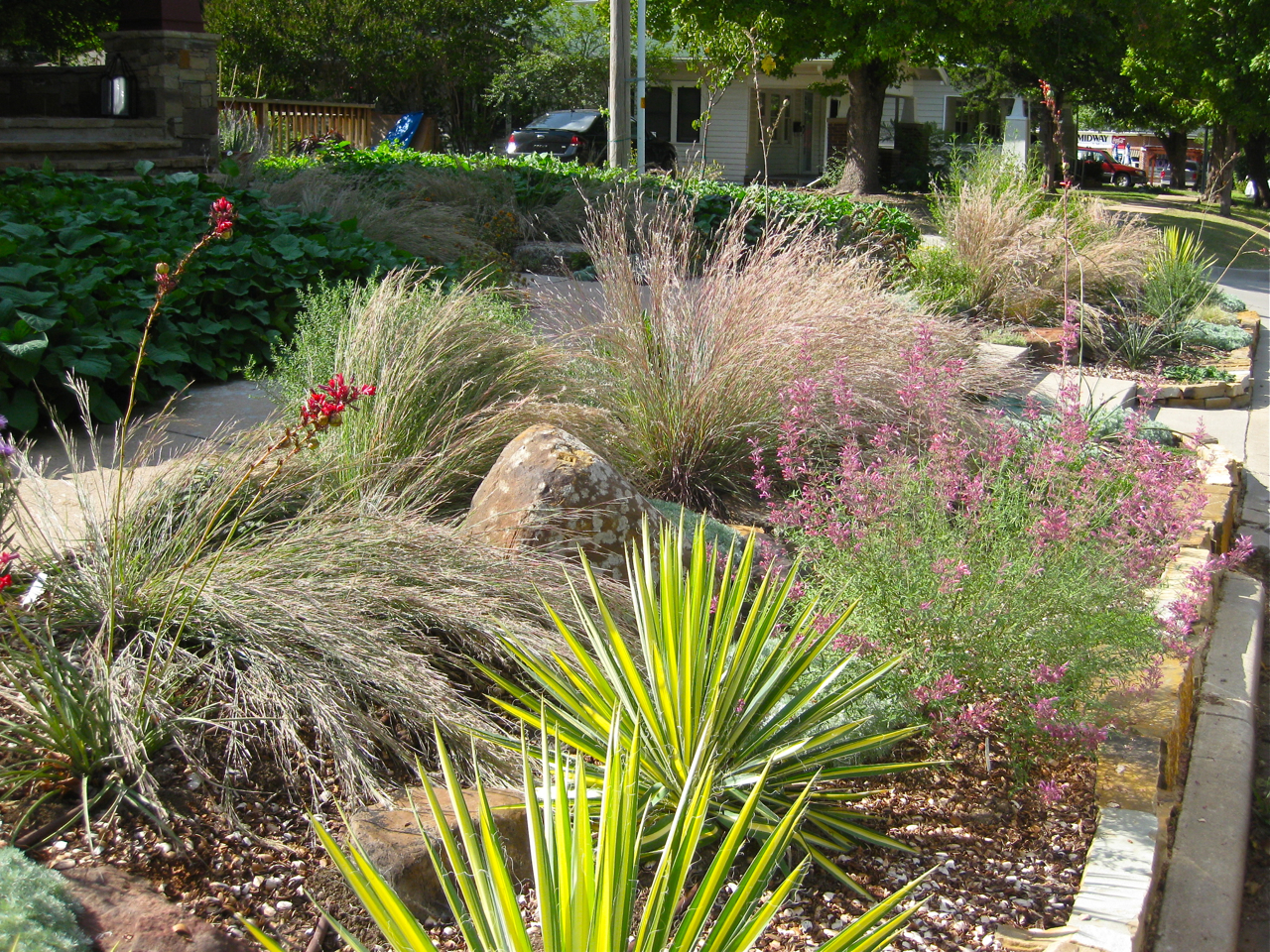
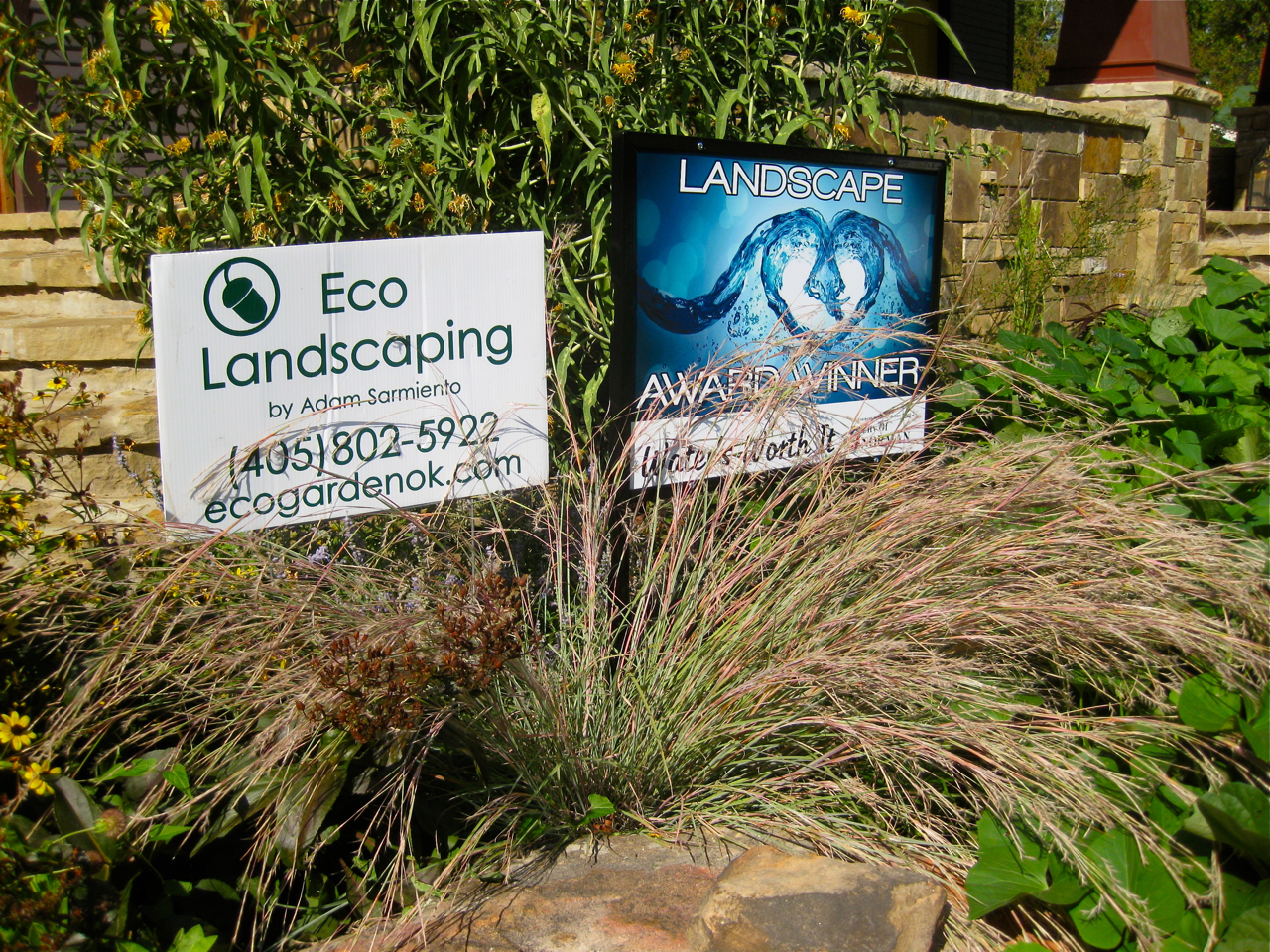
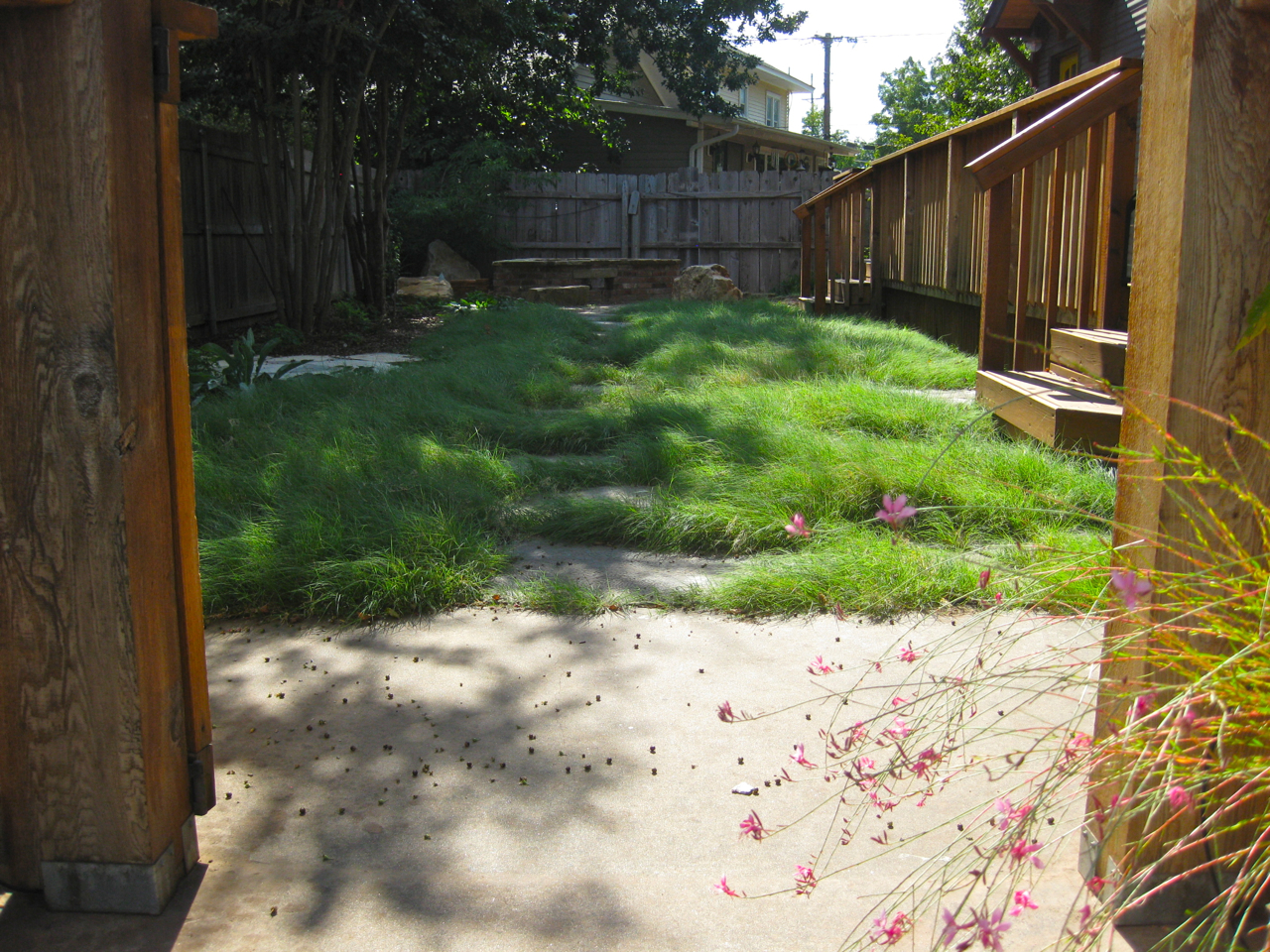 Buffalo Grass lawn
Buffalo Grass lawn

